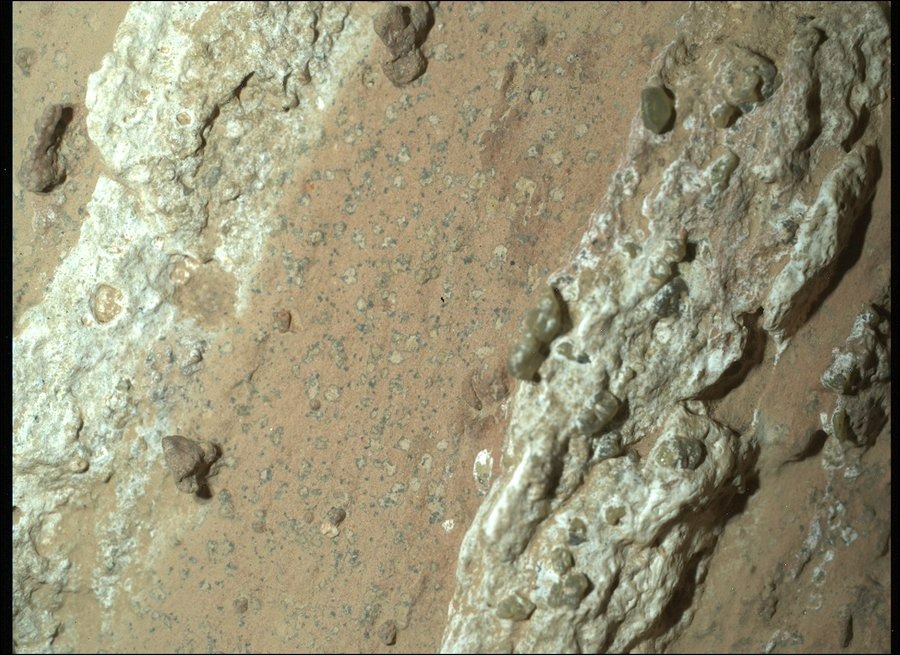Main menu
You are here
Home ›NASA’s Perseverance Rover Scientists Find Intriguing Mars Rock
Very intersting comment by former astronaut and head of NASA Bill Nelson on Twitter/X this week. Does it point towards ancient life on Mars?
He said:
"What a fascinating find by NASA's Perseverance Rover. We have much more to learn, but our six-wheeled geologist came across a rock with indications that it may have hosted microbial life billions of years ago."

The rock nicknamed “Cheyava Falls” by NASA’s Perseverance rover team has qualities that fit the definition of once being host to ancient life. It's from an area that was long ago covered by running water and the rock has chemical signatures and structures that might have been formed by life billions of years ago.
Analysis by instruments aboard the rover indicates the rock possesses qualities that fit the definition of a possible indicator of ancient life. The rock exhibits chemical signatures and structures that could possibly have been formed by life billions of years ago when the area being explored by the rover contained running water. Other explanations for the observed features are being considered by the science team, and future research steps will be required to determine whether ancient life is a valid explanation.
The rock — the rover’s 22nd rock core sample — was collected on July 21, as the rover explored the northern edge of Neretva Vallis, an ancient river valley measuring a quarter-mile (400 meters) wide that was carved by water rushing into Jezero Crater long ago.
NASA is obviously saying that a LOT more research is needed on in this sample but considering looking for signs of ancient life was a key mission objective for the Perseverance Mission, this is clearly an exciting find.
Senior geologist and President of the Mars Society Australia, Dr. Jon Clarke, commented that discoveries like these are the reason Mars sample and return missions and eventually human boots on Martian soil are needed:
“This rock with its complex mineralogy and texture points to a prolonged and complex history. On Earth the history of such rocks can only be understood by detailed study beyond the capability even sophisticated rovers which as Perseverance. I agree with JPL scientist Ken Fraley, that this rock has been studied to the limits of Perseverance’s capability. To further understand it, this sample need to be brought back to Earth to be studied in terrestrial laboratories, including instruments such as the Australian synchrotron."
The Mars Society Australia is always open to comment on assist or with expert opinion in relation to the space exploration, our Solar System and of course, anything to do with Mars.
Please feel free to contact:
Dr. Jonanthan Clarke -President Mars Society of Australia via e-mail
or
Earl White - Vice President Mars Society of Australia via e-mail

